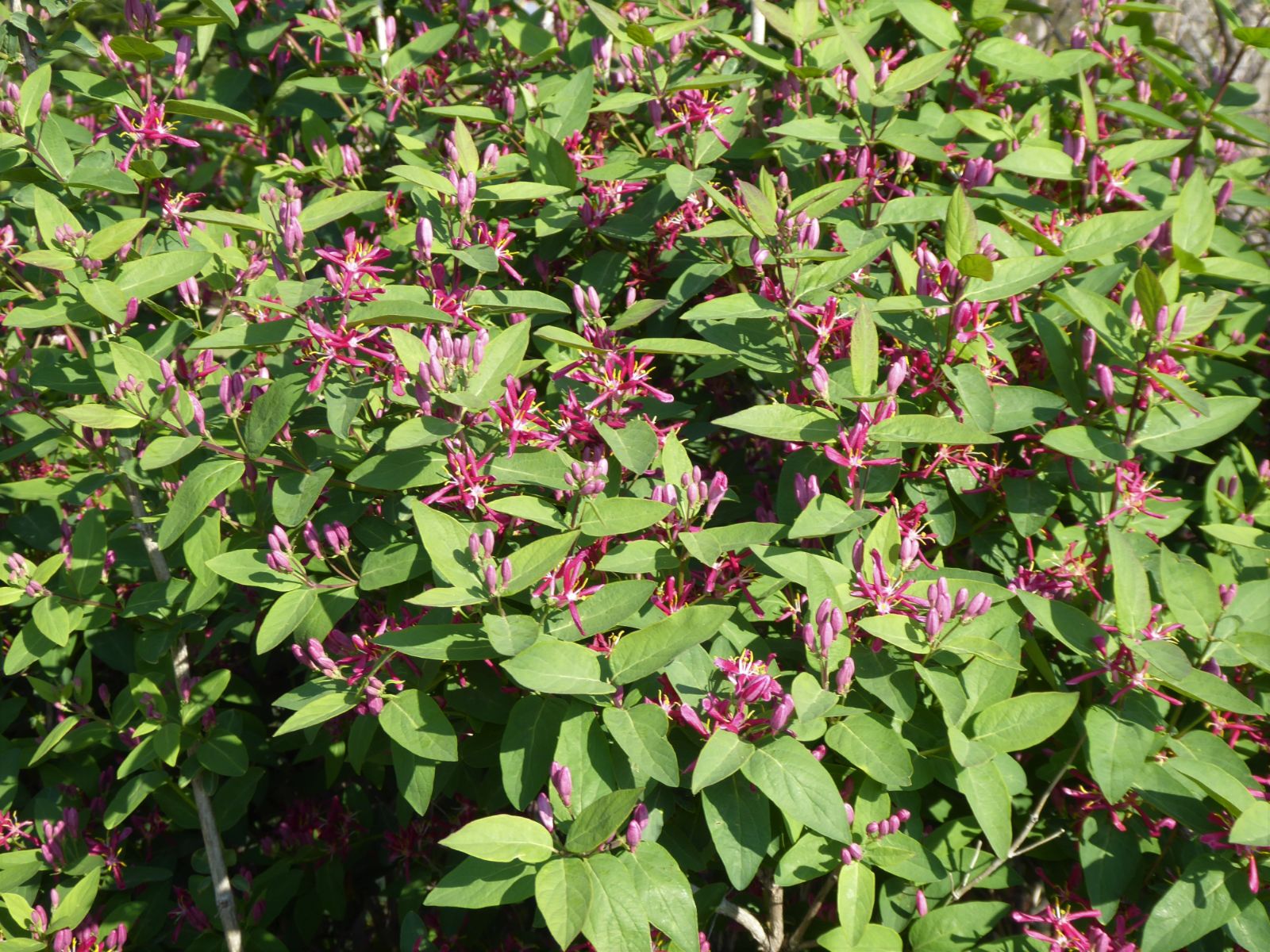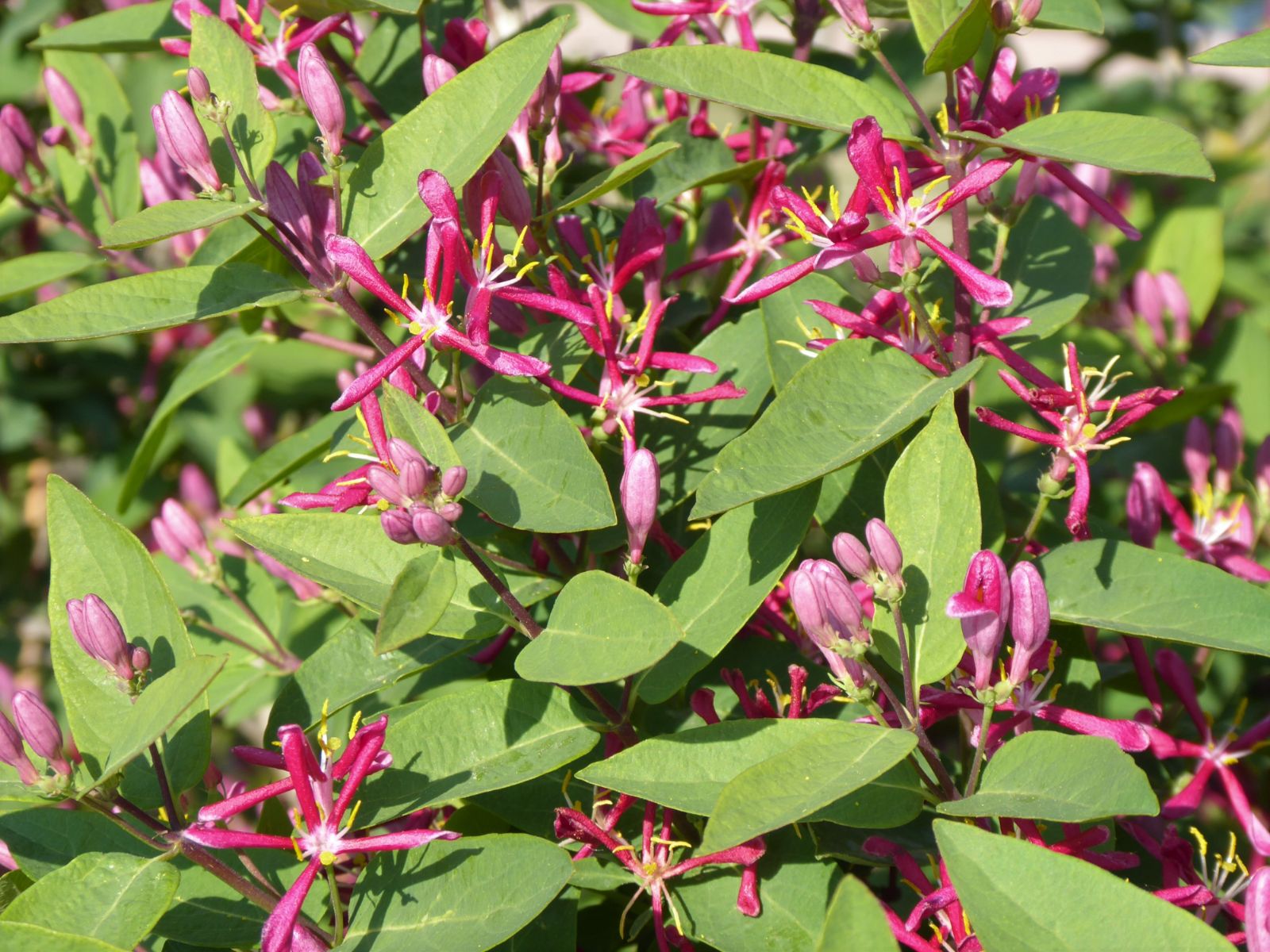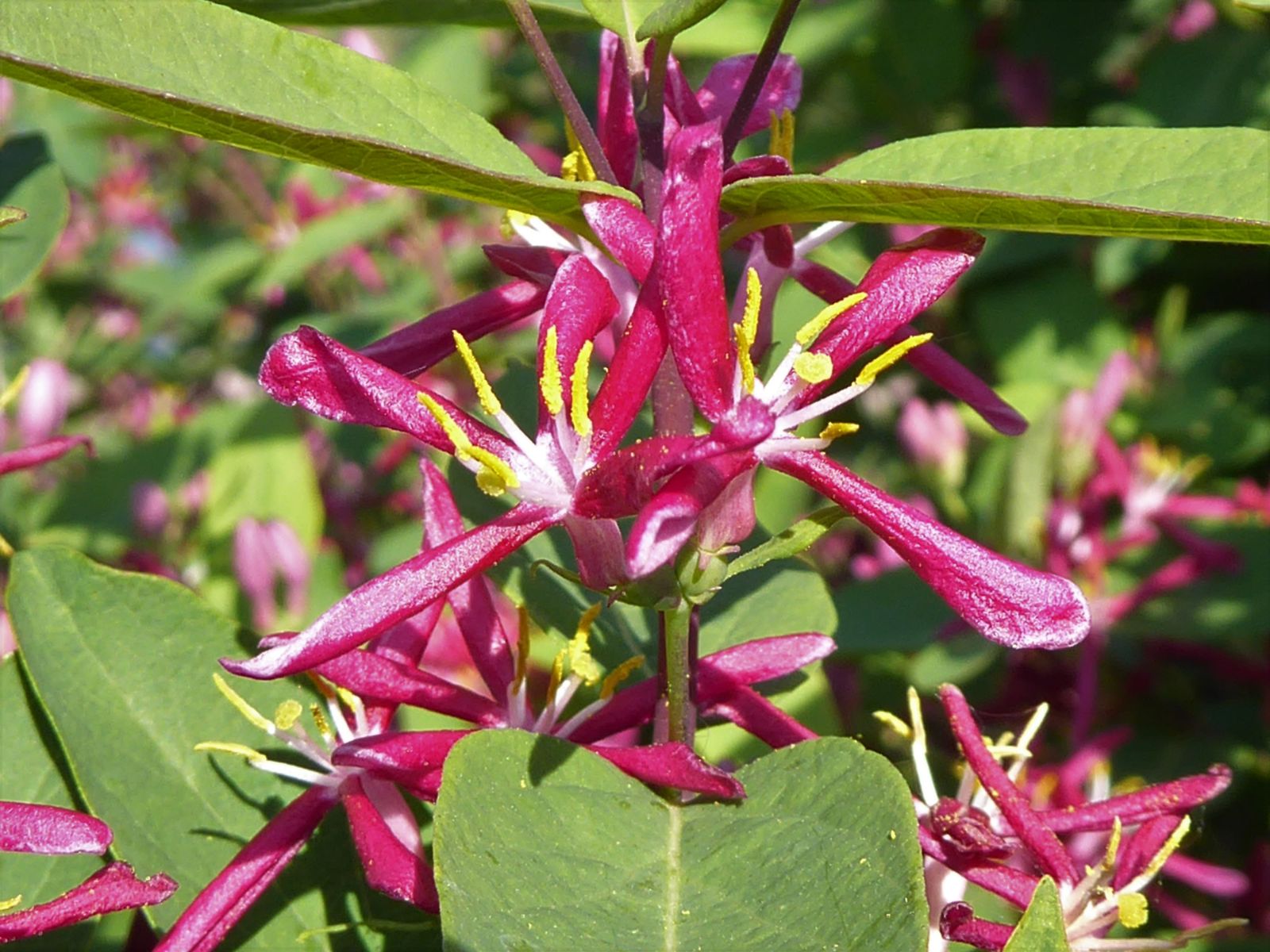Lonicera tatarica
Credits
Article from Bean's Trees and Shrubs Hardy in the British Isles
Recommended citation
'Lonicera tatarica' from the website Trees and Shrubs Online (treesandshrubsonline.
Genus
Other taxa in genus
- Lonicera albertii
- Lonicera alpigena
- Lonicera alseuosmoides
- Lonicera altmannii
- Lonicera × americana
- Lonicera angustifolia
- Lonicera × brownii
- Lonicera caerulea
- Lonicera caprifolium
- Lonicera caucasica
- Lonicera chaetocarpa
- Lonicera chrysantha
- Lonicera ciliosa
- Lonicera deflexicalyx
- Lonicera dioica
- Lonicera etrusca
- Lonicera ferdinandii
- Lonicera flava
- Lonicera fragrantissima
- Lonicera giraldii
- Lonicera griffithii
- Lonicera gynochlamydea
- Lonicera × heckrottii
- Lonicera henryi
- Lonicera hildebrandiana
- Lonicera hirsuta
- Lonicera hispida
- Lonicera iberica
- Lonicera implexa
- Lonicera japonica
- Lonicera korolkowii
- Lonicera ledebourii
- Lonicera maackii
- Lonicera maximowiczii
- Lonicera microphylla
- Lonicera morrowii
- Lonicera myrtillus
- Lonicera nervosa
- Lonicera nigra
- Lonicera nitida
- Lonicera periclymenum
- Lonicera pileata
- Lonicera prolifera
- Lonicera prostrata
- Lonicera purpurascens
- Lonicera × purpusii
- Lonicera pyrenaica
- Lonicera quinquelocularis
- Lonicera rupicola
- Lonicera ruprechtiana
- Lonicera sempervirens
- Lonicera setifera
- Lonicera similis
- Lonicera splendida
- Lonicera standishii
- Lonicera syringantha
- Lonicera tangutica
- Lonicera tatsienensis
- Lonicera × tellmanniana
- Lonicera thibetica
- Lonicera tomentella
- Lonicera tragophylla
- Lonicera trichosantha
- Lonicera xylosteum
- Lonicera yunnanensis
A deciduous shrub of vigorous growth and bushy habit, 8 to 10 ft high; branchlets hollow; young shoots glabrous. Leaves oblong-ovate, slightly heart- shaped or rounded at the base, pointed; on vigorous growths they are 11⁄2 to 21⁄2 in. long, 1 to 11⁄2 in. wide; on the flowering branches less than half the size; green above, rather glaucous beneath, glabrous; stalk 1⁄8 in. long. Flowers white or pinkish, borne in pairs on a slender stalk, 1⁄2 to 1 in. long; corolla two-lipped, glabrous outside, hairy within, 3⁄4 to 1 in. long; tube much shorter than the reflexed oblong lobes. Berries globose, red. Bot. Mag., t. 8677.
In the wild this species reaches from Central Asia to S. Russia. It was introduced in 1752, and is so perfectly adapted to our conditions that it is now the commonest of bush honeysuckles, running semi-wild in some gardens. It is a variable plant so far as the colour of the flowers is concerned, and only the best red forms should be selected. They are often very showy at flowering time, which is May and early June. Many of these red-flowered forms were raised and named in France during the 19th century (Rev. Hort., 1868, pp. 392–3). Modern selections are ‘Hack’s Red’, raised in Canada, with flowers of a deep purplish red; ‘Zabelii’, with flowers near Ruby Red; and ‘Arnold Red’, raised at the Arnold Arboretum, said to have even deeper coloured flowers.
L. tatarica f. sibirica (Pers.) Rehd. is simply a collective name for plants differing from the typical state in having red flowers, and is not a geographical variety. Persoon’s original description reads simply ‘fl. rubris’ (Syn. PI. (1805), Vol. 1, p. 213).
Yellow-fruited forms are known (f. lutea (Loud.) Rehd.).



